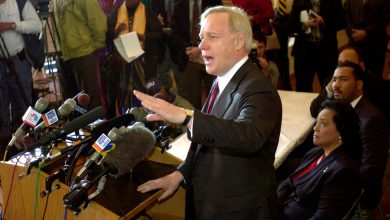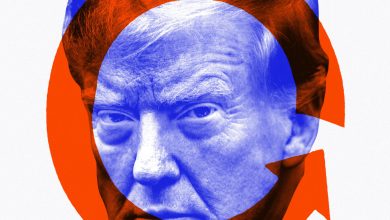Stumbling Into Goldilocks

The U.S. economy has been far more successful at recovering from the Covid shock than it was in dealing with the aftermath of the housing bubble of the 2000s. As I noted in my latest column, four years after the 2007-9 recession began, employment was still five million below its pre-recession peak. This time it’s up by almost six million.
And while there was a wave of inflation, it seems to have broken. This is especially clear if you measure inflation the way other countries do. The Harmonized Index of Consumer Prices differs from the regular Consumer Price Index in that it doesn’t include Owners’ Equivalent Rent, an imputed cost of housing that nobody actually pays and is very much a lagging indicator; and by this measure inflation has already been cut to roughly 2 percent, the Fed’s inflation target:
Basically, America rapidly restored full employment while experiencing a one-time jump in the level of prices without a sustained rise in inflation, the rate at which prices are rising. Not bad, especially considering all the dire predictions made along the way.
But could we have done better? And to the extent that we got it right, were we just lucky?
My take is that we did very well, that the U.S. response to the Covid shock was, in retrospect, fairly close to optimal. But the miracle of 2023, the combination of rapid disinflation with a strong economy, was sort of an accident. Policymakers thought that raising interest rates would cause a recession and raised them anyway because they thought such a recession was necessary. Fortunately, they were wrong on both counts.
What do I mean by saying that policy was close to optimal? Covid disrupted the economy in ways previously associated only with wartime mobilization and demobilization: There was a sudden large change in the composition of demand, with consumers shifting away from in-person services and buying more physical stuff, a shift enlarged and perpetuated by the rise of remote work. The economy couldn’t adapt quickly to this shift, so we found ourselves facing supply-chain problems — inadequate ability to deliver goods — together with excess capacity in services.
How should policy respond? There was a clear case — nicely formalized in a 2021 paper by Veronica Guerrieri, Guido Lorenzoni, Ludwig Straub and Ivan Werning presented at the Fed’s Jackson Hole conference that year — for strongly expansionary monetary and fiscal policy that limited job losses in the service sector, even though this would mean a temporary rise in inflation. And that’s more or less what happened.




